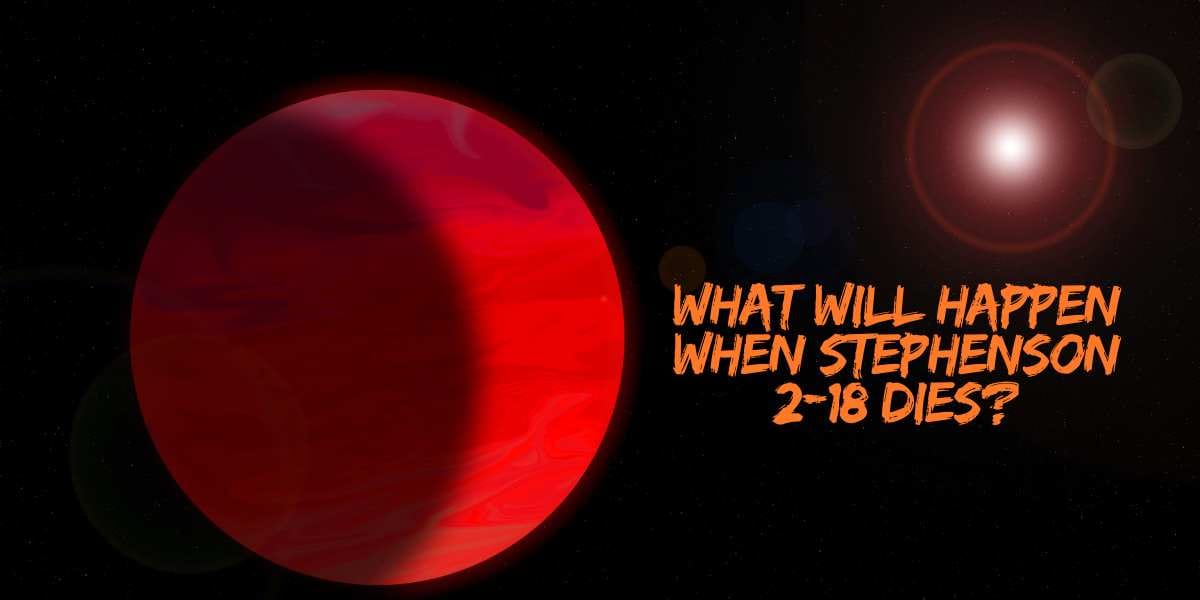Stars are like giant space fireworks, some burn bright for billions of years, while others explode in a spectacular show. One of the biggest stars we know is Stephenson 2-18. It’s so huge that if it replaced our Sun, it would swallow up planets like Jupiter and Saturn!
But stars don’t live forever. Even the biggest ones, like Stephenson 2-18, will one day run out of fuel and die. What happens then? Will it disappear quietly, or will it go out with a bang?
What Is Stephenson 2-18?
Stephenson 2-18 is a red supergiant star, one of the largest stars ever discovered. It’s so big that:
- If placed in our solar system, its surface would reach past Saturn!
- It’s about 2,150 times wider than the Sun.
- It shines thousands of times brighter than the Sun.
This star is located in a distant cluster called Stephenson 2, about 20,000 light-years from Earth. Because it’s so far, we can’t see it with the naked eye, only powerful telescopes can spot it.
How Do Stars Like Stephenson 2-18 Die?
Stars die when they run out of fuel (mostly hydrogen and helium). Small stars fade away slowly, but big stars like Stephenson 2-18 die in a violent explosion called a supernova. Here’s how it happens:
- Fuel Runs Out: The star burns its fuel faster because of its enormous size.
- Core Collapse: The center of the star can’t hold itself up anymore and collapses.
- Supernova Explosion: The outer layers blast away in a massive explosion, brighter than an entire galaxy!
After the explosion, the star’s core might turn into a neutron star or even a black hole.
Will Stephenson 2-18 Become a Black Hole?
Not all big stars turn into black holes. It depends on how much material is left after the explosion.
- If the leftover core is very heavy (more than about 20 times the Sun’s mass), it will collapse into a black hole.
- If it’s a bit lighter, it might become a neutron star, a super-dense, fast-spinning star.
Since Stephenson 2-18 is one of the biggest stars, it has a high chance of becoming a black hole after its supernova.
What Would Happen If Stephenson 2-18 Exploded Near Earth?
Luckily, Stephenson 2-18 is very far away (20,000 light-years), so its explosion won’t harm Earth. But if a star this big exploded closer to us, it could:
- Release dangerous radiation that might affect life on Earth.
- Light up the sky so brightly that we’d see it even during the day!
- Leave behind a black hole or neutron star.
Good thing this giant is far away!
How Long Until Stephenson 2-18 Dies?
Stars like Stephenson 2-18 live shorter lives than smaller stars. While the Sun will live for about 10 billion years, Stephenson 2-18 might only last a few million years.
Since it’s already a red supergiant, it could explode anytime in the next few thousand to million years. But in space terms, that’s still unpredictable!
Can We See Stephenson 2-18’s Death From Earth?
If Stephenson 2-18 explodes, yes, we might see it, but not in our lifetime. Because it’s 20,000 light-years away, the light from its explosion would take 20,000 years to reach us.
If it exploded today, people in the far future would see it as a bright flash in the sky.
Conclusion
Stephenson 2-18 is one of the biggest stars in the universe, but one day, it will run out of fuel and explode in a supernova. It might leave behind a black hole or neutron star, but since it’s so far away, we don’t have to worry.
Stars like this remind us how powerful and ever-changing the universe is. Who knows? Maybe another star even bigger than Stephenson 2-18 is waiting to be discovered!
📌 Frequently Asked Questions
Is Stephenson 2-18 the biggest star?
Yes, Stephenson 2-18 is one of the largest known stars. It’s about 2,150 times wider than the Sun.
Can we see Stephenson 2-18 from Earth?
No, it’s too far away (20,000 light-years) to see with the naked eye. Only powerful telescopes can detect it.
How big is Stephenson 2-18 in km?
Stephenson 2-18 is about 3 billion km wide, big enough to fit the Sun and many planets inside it!
Which is the largest star in the universe?
Stephenson 2-18 is among the largest, but scientists keep discovering new stars. Right now, it’s one of the top contenders.
Is Stephenson 2-18 a black hole?
No, it’s a red supergiant star. But when it dies, it might turn into a black hole.
What if we replace the Sun with Stephenson 2-18?
If Stephenson 2-18 replaced the Sun, its surface would stretch past Saturn, swallowing all inner planets!
Is Stephenson 2-18 in our galaxy?
Yes, it’s in the Milky Way, but very far from Earth (about 20,000 light-years away).
How hot is Stephenson 2-18?
Despite its size, it’s cooler than the Sun, around 3,200°C (5,800°F) on its surface.
Will Stephenson 2-18 explode soon?
It could explode anytime in the next few thousand to million years, but we can’t predict exactly when.
What happens after a supernova explosion?
The star’s core collapses, forming a neutron star or black hole, while the outer layers scatter into space, creating new stars and planets.
